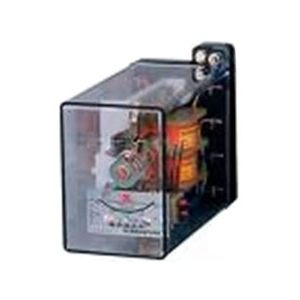The magnetic field of the current
The study of various magnetic phenomena has shown that everywhere, where there is an electric current, i.e. electric charges in motion, there is also a magnetic field of current.
Due to the fact that the magnetic field is formedaround the conductor, when a current appears in the latter, it is often regarded as the source of the formation of a magnetic field. In this sense, it is called the "magnetic field of the current."
Its direction depends on the direction of the electric current around which this field arises.
The fact of the existence of a magnetic field nearA conductor with an electric current can be detected in several ways. One of these methods is the use of iron filings. Having got into a magnetic field of a current, slices of iron from which iron filings consist, become small magnetic arrows. Each of these arrows in a magnetic field is set so that its axis coincides with the orientation of the magnetic field in the place where it is located. With the help of many such arrows, one can see how the direction of forces acting in a magnetic field changes as one moves from one point of the field to another. Such an arrangement in the magnetic field of the current of iron filings is called the magnetic spectrum.
We will use magnetic sawdust and considerdirect current magnetic field. To do this, let us pass the conductor through a sheet of cardboard, and fill the cardboard with a thin layer of iron filings. We note that when the current flows through the conductor, the sawdust will be placed around it in concentric circles.
Lines, according to which the magnetic field of the current has the axes of miniature magnetic arrows, call it the lines of force. With the help of lines of force it is very convenient to graphically represent magnetic fields.
The force line is drawn so that the tangent to it at any point indicates the direction of the force acting at this point on the north pole.
The chains formed in a magnetic field of a current by means of iron filings show what the shape of the lines of force is in a magnetic field.
The lines of force in a magnetic field are closed curves around the conductor. In particular, direct current power magnetic lines are concentric circles whose centers are on the current line.
To determine the direction of magnetic forcelines in connection with the directivity of the current, instead of sawdust, use the magnetic arrows. Having surrounded them with a conductor with a current, we determine the direction of the lines of force. When the orientation of the current in the conductor changes to the opposite one, the magnetic arrows turn 180 °, which indicates a corresponding change in the direction of the field lines.
The direction of the lines of force in a magnetic fieldis connected with the directivity of the current in the conductor by a simple rule proposed by the English scientist Maxwell: if the translational movement of the borer coincides with the direction of the current in the conductor, then the direction of rotation of the knob's handle coincides with the direction of the lines of force in the magnetic field around the conductor.
This rule is sometimes called the gimlet rule.
Let us now take the conductor, bent along the circumference,and, letting the current flow through it, we will again observe the arrangement of the sawdust on the cardboard, installed perpendicular to the plane of the circle. We find that the magnetic lines of force are no longer regular circles, but in this case all the lines are closed, bypassing the conductor, along which the current flows. Thus, the magnetic field lines are always closed around the current.
By placing small magnetic arrows at different points in this field, it is possible to determine the direction of the field lines of force.
The rule of a borer is, of course, applicable tocircular current, however in this case it is more convenient to interchange the direction of the current and the magnetic field. Indeed, if the handle of the drill is rotated by current, the movement of its tip will indicate which direction the magnetic field of the circular current has.
</ p>>



